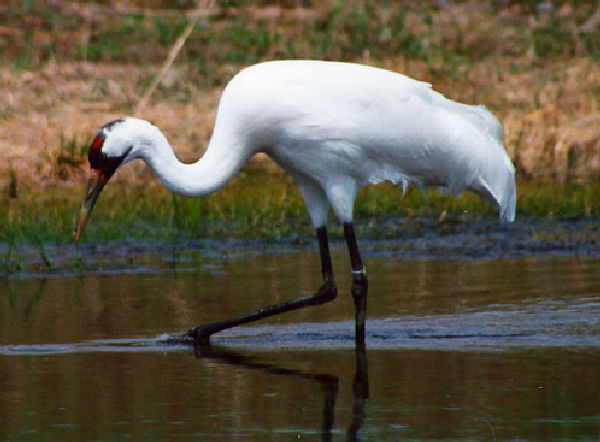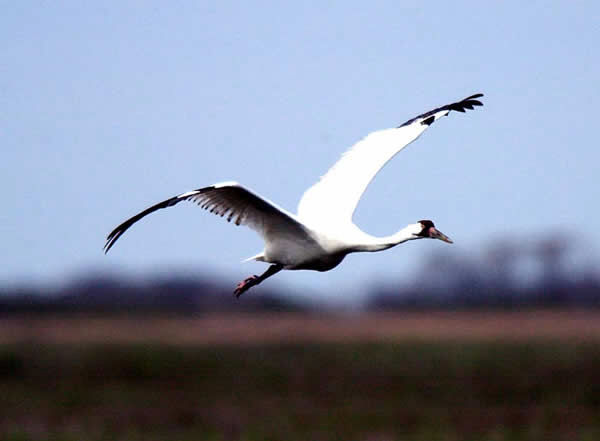Long-legged Waders
Description
45-50" (1.1-1.3 m). W. 7' 6" (2.3 m). A very large crane, pure white with black wing tips, red on forehead and cheeks. Young birds similar, but strongly tinged with brown.
Endangered Status
The Whooping Crane is on the U.S. Endangered Species List. It is classified as endangered in Colorado, Idaho, Kansas, Montana, North Dakota, Nebraska, New Mexico, Oklahoma, South Dakota, Texas, Utah, and Wyoming. The majestic Whooping Crane was reduced by hunting and habitat destruction to about 15 birds in 1937. Strictly protected and monitored since then, the population has grown to more than 300 birds. A population of about 175 cranes breeds in Wood Buffalo National Park, Canada, on the Alberta-Mackenzie border, and winters on the Gulf coast of Texas at the Aransas National Wildlife Refuge. A program to reintroduce endangered Whooping Cranes at Grays Lake National Wildlife Refuge in Idaho ultimately failed. Whooping Crane eggs were hatched by Sandhill Crane foster parents, but the resulting offspring, having imprinted on the Sandhill Cranes, failed to mate with other Whooping Cranes. Some cranes winter at Bosque del Apache National Wildlife Refuge in New Mexico, and a year-round flock now lives in Kissimmee Prairie, Florida. Attempts are being made to establish a migrating flock in the East.
Range
Breeds in Wood Buffalo National Park on Alberta-Mackenzie border. Winters on Gulf Coast of Texas at Aransas National Wildlife Refuge. A few winter at Bosque del Apache National Wildlife Refuge in New Mexico. A flock has been established in Florida.
Discussion
One of our most spectacular birds, the Whooping Crane stands nearly 5 feet tall and has a wingspan of more than 7 feet. The Wood Buffalo/Aransas flock migrates 2,500 miles each way between its nesting grounds and its wintering grounds. It nests in impenetrable muskeg wilderness and winters in salt marshes.




